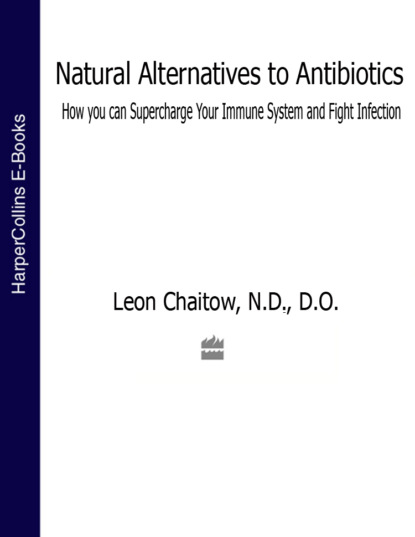По всем вопросам обращайтесь на: info@litportal.ru
(©) 2003-2024.
✖
Natural Alternatives to Antibiotics: How you can Supercharge Your Immune System and Fight Infection
Автор
Год написания книги
2019
Настройки чтения
Размер шрифта
Высота строк
Поля
that –
5,000 people are being killed every year in British hospitals by infections they catch – when they are in the hospital.
A further 15,000 people’s deaths are being contributed to infections they catch – when they are in the hospital.
One in every 16 patients who goes into the hospital for anything at all will develop a ‘hospital acquired infection’ (HAI) – a serious illness which they catch from someone in the hospital, usually a member of staff.
In intensive care units the rate is as high as one patient in every five developing an HAI.
The most common of the infections acquired in this way relate to the bladder, chest and surgical wounds – and many of them involve difficult to treat ‘superbugs’ (see below).
In the US, figures published in 1994 show that one patient out of every 10 develops infections caught in the hospital, and that this involves around 2.5 million people every year.
Every year 20,000 of these people die from – and the deaths of a further 60,000 are contributed to by – the hospital acquired infections, a huge number of them involving antibiotic resistant superbugs.
Internal Ecological Damage
There is, however, another major outcome from the use of antibiotics which forms a less obvious but nevertheless very important part of the crisis story; the devastation that occurs in the internal environment of the body, its own ecology, especially that of the intestinal tract where hundreds of trillions of ‘friendly’ bacteria live and provide life-supporting services for us.
When antibiotics are used against ‘bad’ bacteria which infect us, these friendly bacteria are also damaged or killed. This is why major sections of this book will describe ways in which this internal ecological damage can be minimized or avoided (by using alternatives to antibiotics and improving our own natural defense systems – see Chapters 5, 6 and 9).
The range of conditions which can develop as a result of antibiotics causing damage to the normal intestinal flora is very wide indeed and can include:
elevated cholesterol levels – because the friendly bacteria may not be able to adequately perform their usual ‘recycling’ role (see Chapter 8)
menopausal symptoms, including osteoporosis – more likely and more severe because the friendly bacteria may not be able to perform their normal estrogen- and progesterone-recycling tasks (see Chapter 8)
premenstrual and gynecological symptoms – likely to be more severe for the same reasons
liver disease – more likely because the friendly bacteria may not be able to perform their normal detoxification tasks, so causing excessive loading of the liver
chronic digestive and bowel problems – because of the ecological damage caused to the normal flora, which are vital to normal digestion and intestinal function
increased risk of bladder infections – because of this ecological disorder, which allows the overgrowth of undesirable bacteria and yeasts that are often the ‘reservoir’ for infections in the bladder
serious arthritic conditions – can develop after antibiotic damage to the bowel flora (for complicated reasons which are explained further in Chapter 8)
depressed immune function – a not uncommon antibiotic sequel (as explained in Chapter 5)
and many, many more health problems, ranging from acne to kidney disease, can be linked to antibiotics …
The really important messages which should emerge from the discussions and evidence which will be presented in this and later chapters include the facts that –
Antibiotics can save lives – when used appropriately: right place, right situation, right time, right antibiotic for the correct bacteria, right amount, right means of administration (by mouth or by injection, for example), etc.
Antibiotics are more often prescribed ‘wrongly’ (see below) than correctly – up to 70 percent of the time, say some experts.
One of the results of this wrong use is the emergence of strains of bacteria which can no longer be killed by antibiotics (there are a variety of other reasons for resistance developing, as will be explained).
Even when used appropriately, antibiotics almost always damage the internal environment – especially of the intestinal tract – and this can itself lead to an assortment of health problems later on.
There are tactics, which will be explained, by means of which many of the dangers and side-effects of antibiotic use can be reduced or avoided, particularly by replenishing and revitalizing the important bacterial flora which live inside us, as explained in Chapters 7 and 9.
There are alternatives to the use of antibiotics; the most important of these is an efficient immune system. Methods for encouraging this will be detailed in Chapters 5 and 6.
The antibiotic crisis we face will be evaluated from different perspectives in those sections of the book which deal with protective tactics.
First it is necessary to look briefly at the individual characteristics of a selection of bacteria, as well as at the different types of antibiotics and how they are thought to work.
The ‘alternatives’ to the present ways of handling infection will include the use of strategies that can enhance immune function, make our natural defenses work more efficiently, and reduce toxicity, as well as ways in which damaged internal ecological systems can be repaired or improved.
After that we will survey the short- and long-term dangers of using antibiotics, descriptions will be presented, along with the evidence which supports them, by means of which we can safely reduce the hazards which antibiotics present.
The major suggestions as to what alternatives exist to antibiotics, as well as what to do if you have to take antibiotics (see Chapter 9), as well as strategies for children who have to take antibiotics (Chapter 10) will therefore complete our journey through the story of antibiotic use: a story of high hopes, spectacular successes, emerging doubts and finally looming disaster, as bacteria seem to be winning the battle against medical science.
There Is Real Hope
This is far from being just a doom and gloom story. We can learn a great deal from what has happened in the medical adventure which represents the story of antibiotics up till now, and this will allow us to look at alternative methods of health care and prevention, so that out of this very real crisis can come a positive change for the better.
It is necessary to repeat the statement that antibiotics can and do save lives, and probably do so tens of thousands of times every day. There are times when not taking antibiotics, or not having them administered, could prove to be an unwise, and almost certainly fatal, decision. Some indication will be offered, when we look at different forms of infection, as to when antibiotics are really necessary, and when they might be dangerous.
The crisis in antibiotic use which has gradually emerged over the past 15 to 20 years or so is only partly the result of the overuse and misuse of these potentially life-saving drugs. It is also in large part the natural (and, as we will see, not unexpected) outcome of an attack on a life-form which has found ways of protecting itself – by mutation, by natural selection, as well as by means of in-built resistance.
Resistance
Over the past 15 years a significant change has taken place in the way bacteria that cause infection respond to antibiotics. Many of the bacteria are becoming increasingly drug-resistant, so that more (and stronger) antibiotics are required to control an ever wider, and increasing, range of potentially serious infectious diseases.
As a result there are more side-effects, which are often more severe than previously, and treatment has therefore become both more dangerous and more expensive.
For example, Professor Robert Baltimore of Yale University recently reported that Haemophilus influenzae, which can cause meningitis and which was in the past easily controlled with ampicillin, is now (1997) resistant to antibiotics in around 20 percent of cases. They just don’t work any more.
The most feared superbug of all is Staphylococcus aureus, which has been the cause of the closure of an ever increasing number of operating rooms and hospital wards, usually temporarily but sometimes permanently, as well as being responsible for the deaths of numerous infected patients.
It has been estimated that around 90 percent of strains of Staphylococcus aureus are now resistant to penicillin and ampicillin, and some strains are resistant to almost all antibiotics except highly potent, highly toxic forms of antibiotic which can themselves cause serious side-effects unless used very cautiously.
THE ECZEMA CONNECTION5,6
A new term is creeping into the medical vocabulary. Not only are we being told about the dangers of superbugs, but now there is talk of the dangers of superantigens (substances which provoke a severe allergic reaction). The superantigens which some bacteria can generate are being blamed for the dramatic increase in the incidence of childhood eczema.
Many bacteria do the damage they do because of toxic and allergy-provoking substances they produce. In the case of eczema, what seems to happen in an increasing number of cases is that the normal, harmless bacteria which live on the skin, such as Staphylococcus epidermidis, decrease in number, probably as a result of antibiotics, allowing Staphylococcus aureus to invade the territory usually occupied by S. epidermidis. This change in the local flora can cause eczema patches to become severely infected, especially if they are scratched, leading to yellow, encrusted, usually weeping lesions.
Research at the Hospital for Sick Children in London in the early 1990s showed that almost 100 percent of children with this form of severe eczema had colonies of S. aureus on their skin, and the more of these alien bacteria that were present the worse the eczema was. These particular strains of S. aureus are a new phenomenon, almost certainly resulting from changes caused by their response to antibiotics which has allowed them to produce the so-called ‘superantigens’.
As Professor Bill Noble of St. Thomas’s Hospital, London explains, ‘These superantigens produce a horrendous response, a vicious allergic reaction at the site of the skin problem.’
Current treatment usually involves more antibiotics, steroid creams and/or antiseptic creams. Now it is reasonable to ask why, if antibiotics have helped to produce the strains of S. aureus which are causing this rampant increase in severe eczema, is it logical to add even more antibiotics into the picture?
This question is even more urgent when there seem to be simpler and safer answers. It has become clear that some skin specialists have found that they can deal with severe eczema without more and more antibiotics. For example, dermatologist consultants in Sheffield, England have found that they can prevent S. aureus from doing its damage by the simple means of abundant use of creams and oils. They explain,









